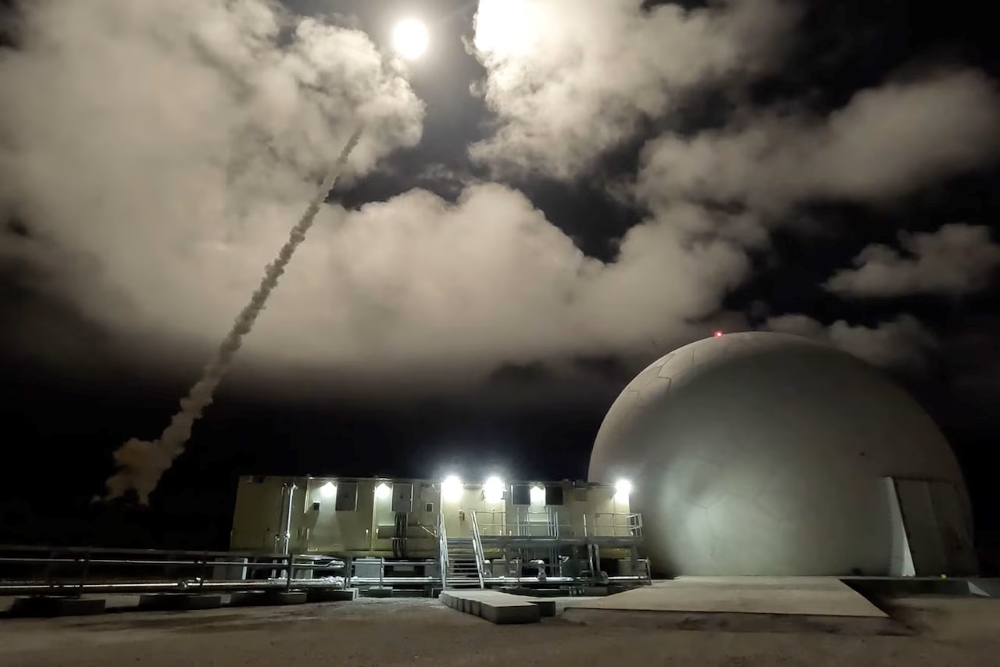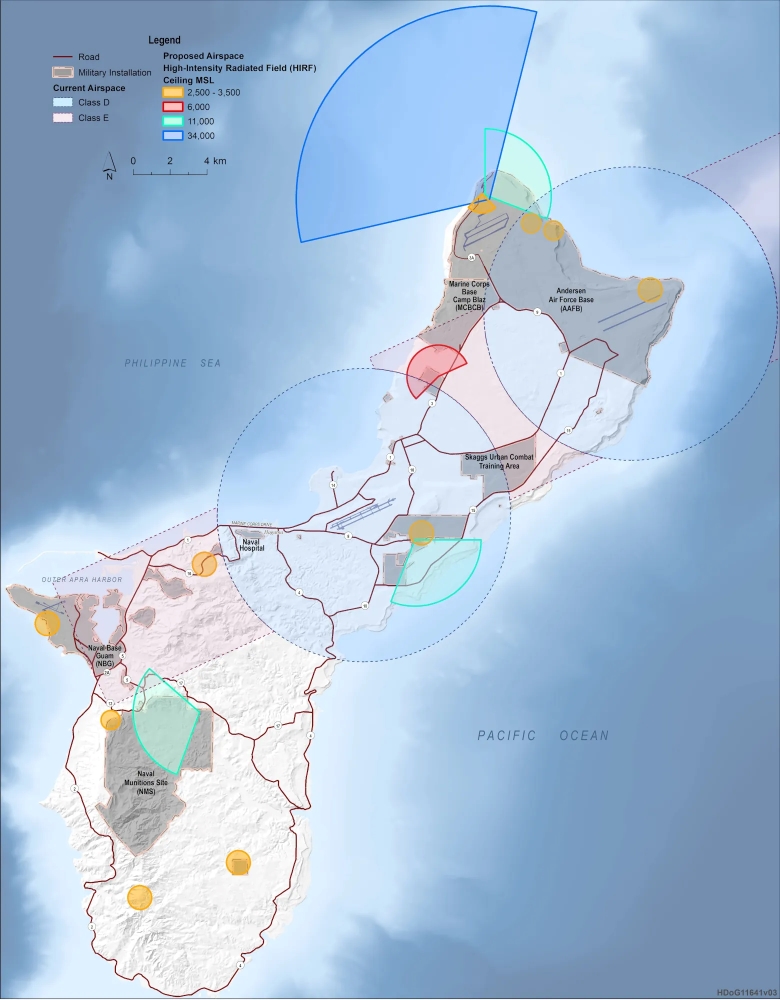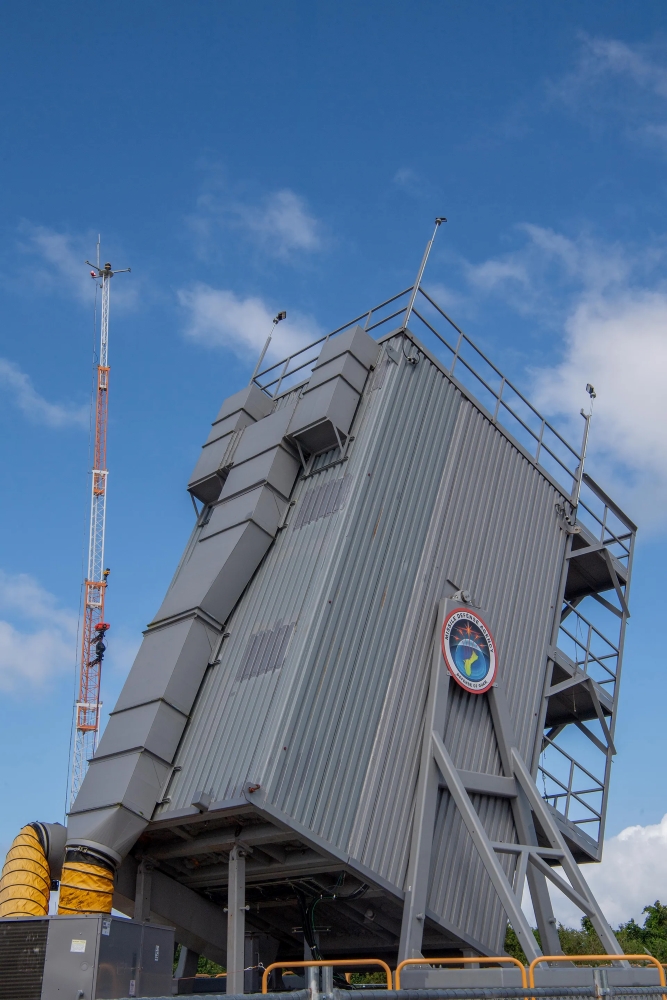
The U.S. Missile Defense Agency (MDA) has announced on Tuesday 10 December the first successful live interception of a ballistic missile using the Guam Defense System, the new multi-layered air defence system for the key Island-base.
Named Flight Experiment Mission-02 (FEM-02), the test saw the AEGIS Guam System fire a Standard Missile-3 Block IIA (SM-3 Block IIA) to intercept a representative medium-range ballistic missile (MRBM) target, which was successfully hit more than 200 nautical miles to the northeast of the Island. The MDA press release says the target was “air launched”.
The target was a L3 Harris designed, manufactured and launched MRBM Type 1. The SM-3 missiles was launched by the new and unique MK41 land-based launchers developed specifically for use on Guam and vastly different from the fixed “towers” used in the AEGIS Ashore installations in Romania and Poland.
The radar is also different: Guam employs the latest AN/TPY-6, known mostly for being the primary sensor of the latest DDG-51 Flight IIIs. The AN/TPY-6 is based on the same technology as the AN/TPY-7 Long Range Discrimination Radar (LRDR) and both are produced by Lockheed Martin.
The LRDR is currently used in Alaska as part of the anti-ballistic sensor chain for defense of the USA. The test from Guam marked the first end-to-end engagement utilizing the AN/TPY-6 radar during a live ballistic missile defense test, according to the MDA. While the target was tracked by the AN/TPY-6 radar ashore on Guam, a US Navy DDG-51 Flight I-type destroyer, the USS MILIUS (DDG-69) also detected, tracked and simulated engaging the ballistic missile.
The US Army’s Terminal High Altitude Area Defense (THAAD) battery based on Guam (where it has been permanently deployed since 2013) also tracked the missile, and the Japanese destroyer JS HAGURO (DDG-180) also “exercised its air defense support”. The Army THAAD battery on Guam is manned by about 100 soldiers and consists of six launchers each with eight interceptor missiles and an AN/TPY-2 radar deployed at Ritidian Point, the north-western tip of the island.
The Guam Defense System is a major MDA project of strategic importance, which the Pacific Command identifies as its “number 1” priority. The project has been launched in 2022 to provide this key Island-base with “360-degree coverage, and layered defense against regional ballistic, maneuvering ballistic, hypersonic glide, and cruise missile threats.”
Funding for the effort has varied, with 80 million in FY2022, 26,5 in FY2023, just short of 170 in FY2024 and 22,6 in FY2025. 2024 saw most of the equipment for “1” Guam Vertical Launching System (VLS), but “specific quantities and delivery locations” are classified so information available in public is limited. A briefing given to Guam’s population and authorities in summer 2023 showed the arcs of “increased irradiation” from the various planned radars.

Although the map provides no univocal identification of the radar types, the arcs extension and known information suggest the retention of the THAAD radar in its current position and addition of at least 2 AN/TPY-6, one in the north and one in the middle section of the island. The number of VLS involved is not declared. The arcs also suggest the deployment of 3 Raytheon GHOST EYE Lower Tier Air and Missile Defense Sensor (LTAMDS) radars connected to US Army PATRIOT batteries, again at Ritidian Point at Guam’s northern end; near the Naval Base Guam’s (NBG) Barrigada site in the middle of the island and in a location within the Naval Munitions Site (NMS) to the south.
In total, some 20 locations all over the island are proposed for the deployment of radars and/or missile launchers ranging from low-level SENTINEL radars upwards. Army Indirect Fire Protection Capability (IFPC) batteries up to the AEGIS Guam system. It has been earlier suggested that even the AN/TPY-6 sensor for Guam is mobile or at least relocatable, although it’s difficult to say. Photos released show a fixed radome that conceals the exact configuration of the sensor within.
The Guam AEGIS launcher is unique in that it seems a “semi-mobile” (in that, being mounted on a steel frame it looks like something that could be relocated if needed) MK41 launcher with the unique ability of tilting laterally. This might have a utility in reloading, but photos released so far actually show it being held vertical for the loading operations, carried out with cranes to lift the canisters in position. The launcher has been shown tilted at an angle during launch instead: launching the interceptor at an angle rather than vertically, and already facing in the general direction of the threat has possibly been identified as an advantage worth pursuing.
Unlike the fixed “towers” of the AEGIS Ashore sites in Europe, the Guam system has been expected, from the start, to employ additional missiles on top of the SM-3. Particular interest is pinned on the SM-6 and, eventually, on the Glide Phase Interceptor to counter hypersonic threats. There is a possibility that, with additional launchers added, ESSM and SM-2 could also be held to contribute to the wider anti-air battles against air-breathing targets.
Guam’s Defense Architecture System will be controlled by a Joint Command Center that will bring together the AEGIS Guam System and the US Army’s own Integrated Air and Missile Defense Battle Command System (IBCS) and Command and Control, Battle Management and Communications mission node providing local continuity of operations.
After this year’s initial capability demonstration, enhanced capability is planned in 2029, and “future additional capability” is to follow in the 2030s.
Follow us on Telegram, Facebook and X.









.png)
